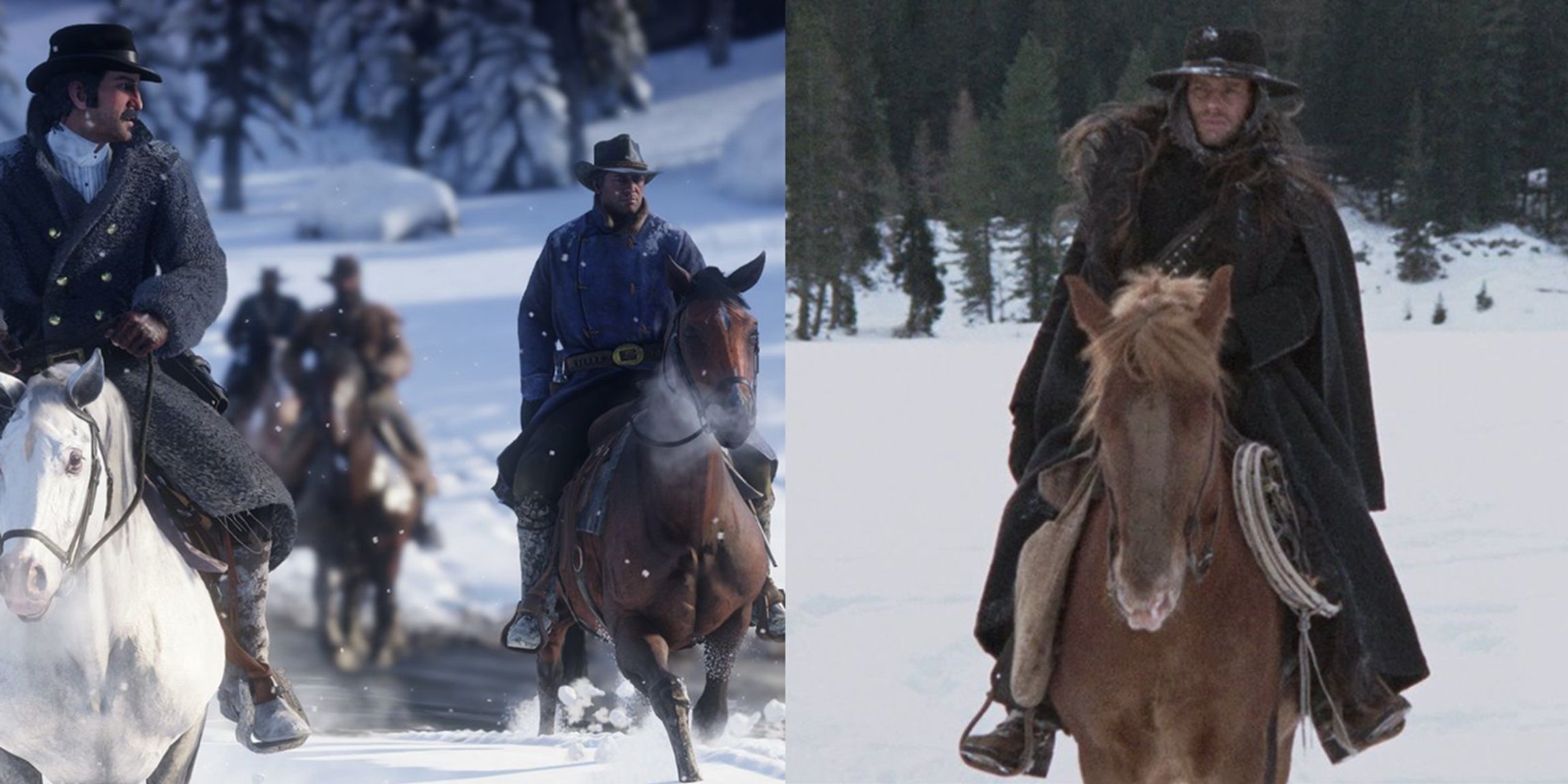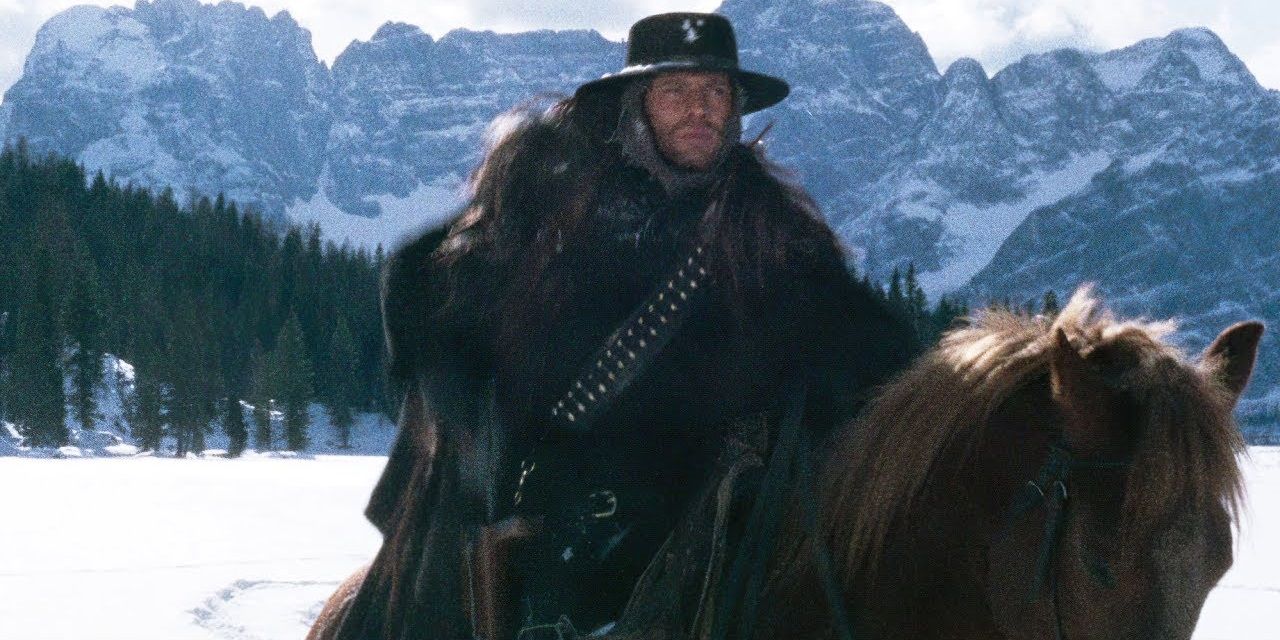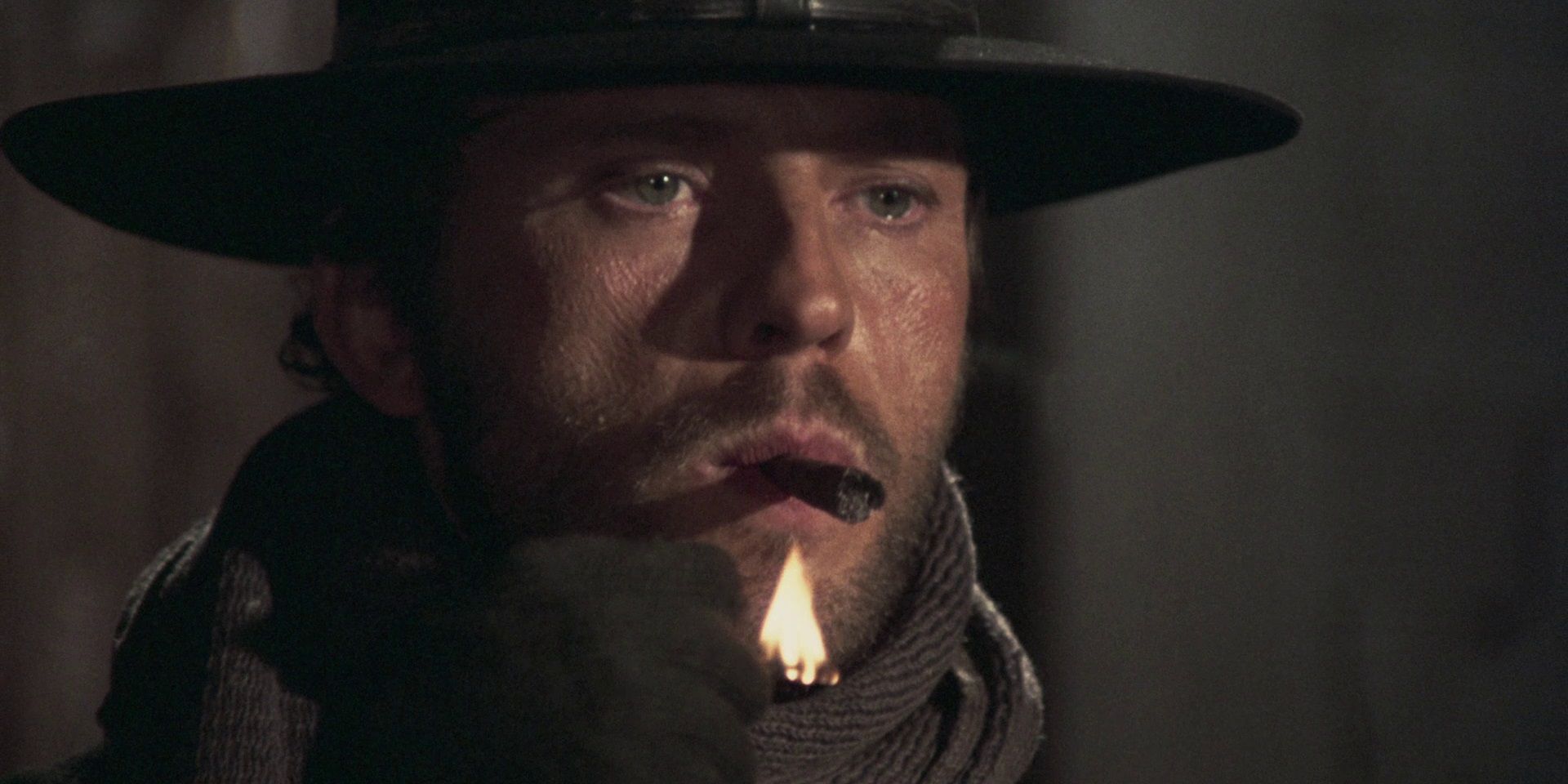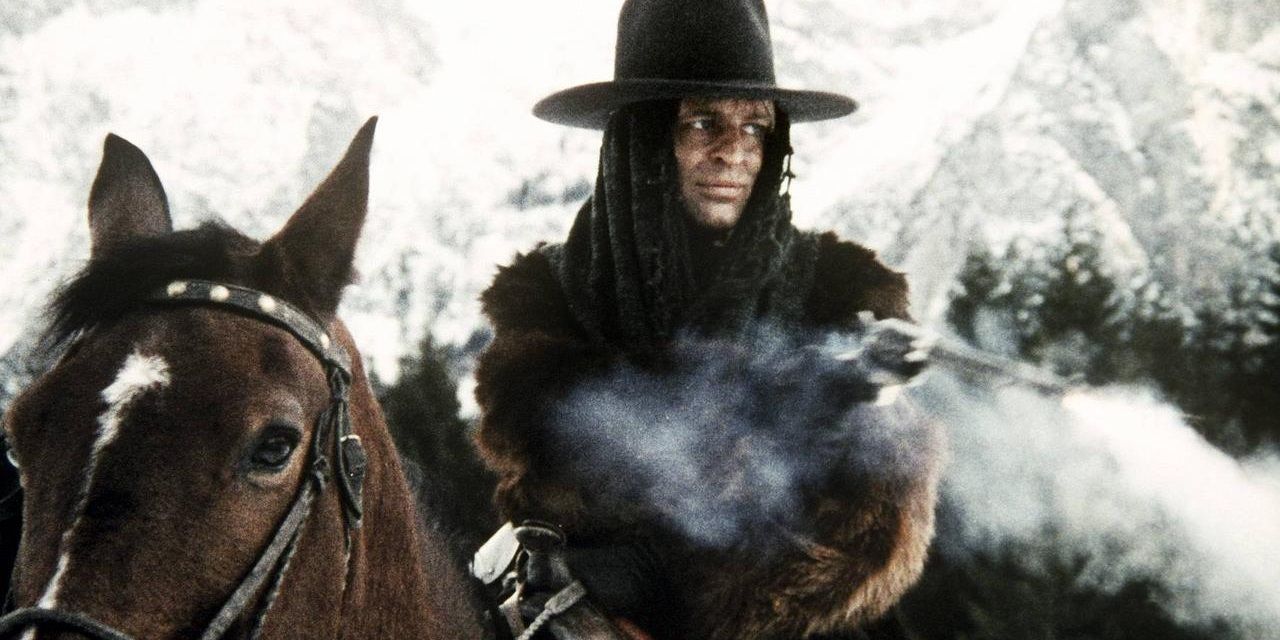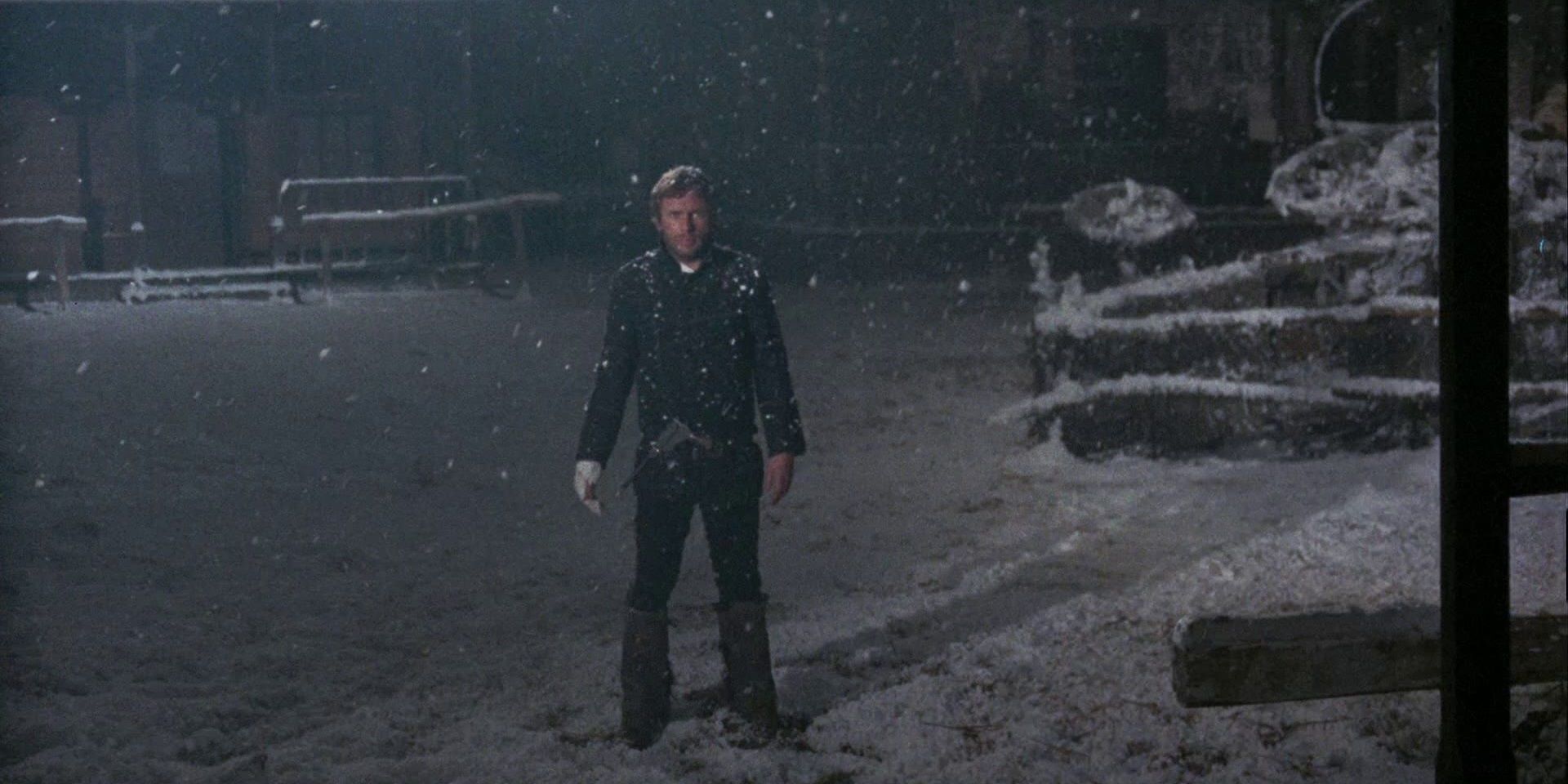Back in 2018, Red Dead Redemption 2 was praised as one of the greatest video games ever made. By making the follow-up game a prequel and shifting the focus to a new character with his own narrative journey, Rockstar avoided rehashing the classic original and created a new western game that stands on its own two feet.
The game opens with the Van der Linde gang traversing a thick layer of snow, having been forced to leave their fortune behind following a botched heist. RDR2’s early missions take place in these harsh wintry environments, which goes hand-in-hand with the story’s dark themes.
The bleak snowy landscapes of these early missions seem heavily influenced by the setting of Sergio Corbucci’s 1968 spaghetti western masterpiece The Great Silence. Corbucci’s movie similarly uses cold, unforgiving environments to highlight its cold, unforgiving characters.
Jean-Louis Trintignant stars as a mute gunfighter named Silence, who’s called upon to save the town of Snow Hill, Utah. When the governor changes legislation to label the poor residents of Snow Hill as outlaws, a band of bounty hunters rides in to freely execute everyone in town. The only thing that stands between the defenseless townspeople and the cold-blooded killers who can legally wipe them all out is Silence.
Sergio Corbucci is most famous for directing 1966’s Django. Along with Sergio Leone’s A Fistful of Dollars, another reimagining of Akira Kurosawa’s Yojimbo set in the Old West, Django pioneered the spaghetti western subgenre. Technically speaking, spaghetti westerns are Italian-made westerns, but thanks to the uniquely brutal films of Corbucci and Leone, they’re defined by a rougher, grittier vision of the West, usually focused on revenge. Corbucci’s best movies include The Mercenary, which sees a Polish bounty hunter taking on the corrupt Mexican government, and Navajo Joe, which follows a Native American warrior’s quest to kill the white oppressors who slaughtered his entire tribe. Throughout his career, Corbucci made all kinds of rough, challenging, violent westerns, but The Great Silence is arguably the bleakest movie of his entire career.
In a traditional western, the premise of a gunslinger protecting a defenseless town from evil would culminate in an armed standoff whereby the hero defeats the villains, peace is restored, and he rides off into the sunset. However, The Great Silence is anything but a traditional western. Silence is hopelessly outmatched by the villainous Loco and his gang. When he’s invited to the middle of town for a climactic gunfight, he’s barely able to stand up because he’s been so sadistically brutalized by the bounty hunters.
Aside from the movie’s snowbound setting, the brilliantly anticlimactic ending is the most notable thing about The Great Silence. Corbucci spends the whole movie putting Silence through the ringer and establishing Loco as a truly hateable villain whose gruesome death is highly anticipated. The audience really wants to see Silence kill Loco and his team of bounty hunters and save the town. But that’s not how it goes down at all. (SPOILER ALERT!)
Even the most subversive westerns, like Corbucci’s own Django, end with the good guy killing the bad guys. But at the end of The Great Silence, Silence is gunned down very unceremoniously by Loco. He doesn’t even get a chance to draw his weapon. His girlfriend Pauline rushes in to finish the deed, but Loco shoots her, too. Then, as the villagers are desperately begging for their lives, the bounty hunters murder them all in cold blood. The bad guys ride out of town, leaving a pile of bodies in their wake, and the credits roll. It’s one of the grimmest, most unsettling endings in the history of westerns.
This kind of ending can go horribly wrong and end up being dissatisfying. If a movie has built up to a hero facing off against a villain, then the villain killing the hero as soon as they show up could leave audiences feeling cheated. But Corbucci used this technique masterfully in The Great Silence.
The alternate endings requested by the producers exemplify how perfect Corbucci’s depressing finale is. There’s a “happy” ending in which Silence saves the day and an “ambiguous” ending that suggests Loco has a last-minute change of heart. Both of these endings feel incredibly disingenuous to the bleakness of Corbucci’s vision. This material called for a miserable ending to Silence’s story, and the fact that Corbucci dared to cross that threshold makes The Great Silence the perfect anti-western.
Like Corbucci’s legendary work in the western genre, the Red Dead games have gone out of their way to deconstruct the whitewashed myths of the western to present a more morally complex and historically accurate portrait of life on the frontier. Any gamers who enjoyed Arthur Morgan’s gun-toting antics in RDR2 would love the blood-soaked adventures of Silence in Corbucci’s revisionist gem.

